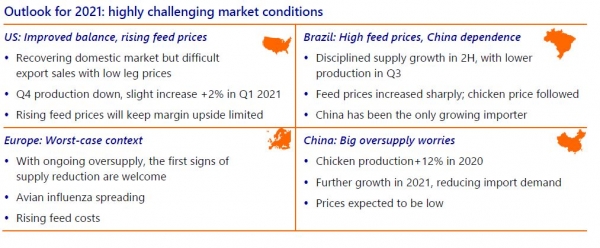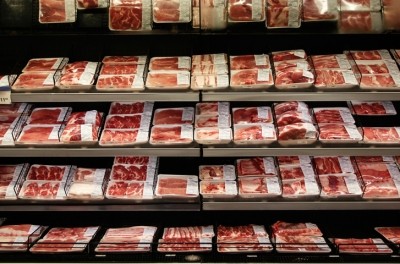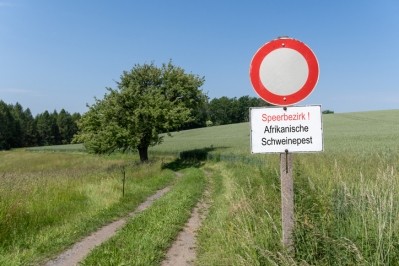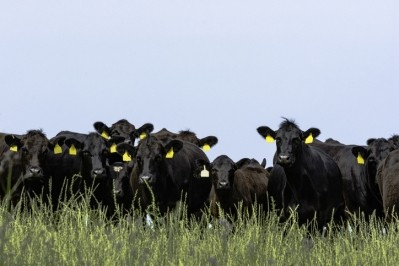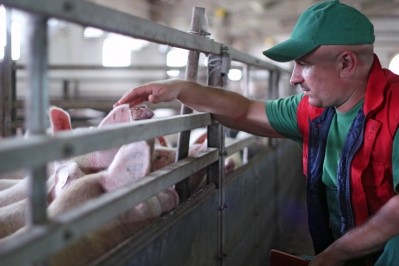Poultry companies need to prepare for year of high and volatile feed prices
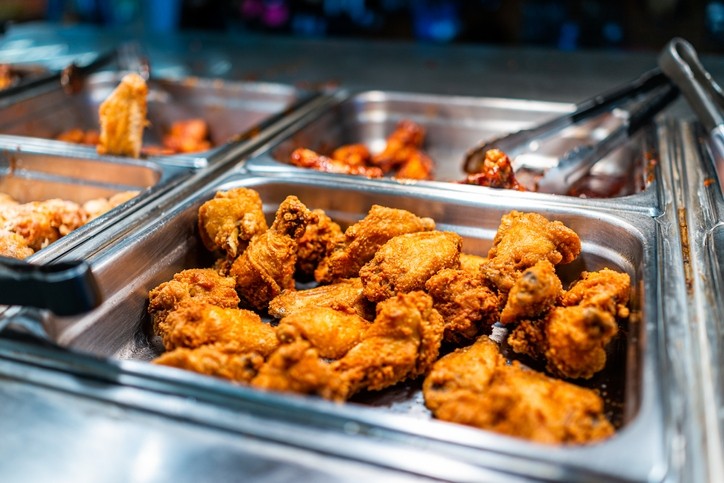
So says Rabobank in its latest poultry quarterly.
Foodservice sales, which the international poultry industry is heavily reliant on, will be down again in most markets compared to 2019 levels, said the analysts.
There will also be more competitive global poultry trade markets in 2021 due to China’s and Vietnam’s African swine fever (ASF) recovery.
Rabobank flags that global grain and oilseed prices have rallied since August 2020, with soybean meal, corn and wheat up 26%, 22% and 15%, respectively, in Q4 compared to the same quarter in 2019. “The sharp price increases [were caused] by tightening supply and strong demand in China.”
China’s increased demand in part reflects the recovery of pig farming and the chicken industry’s continuing expansionary phase there – up 12% for 2020. “Vietnam’s pork industry has also been recovering from the impacts of ASF since early 2019. The massive investments in Asian pork and chicken industries that have pushed up demand for corn and soybeans are a major driver of rising grain and oilseed prices.”
Another factor causing a hike in global feed prices is weather conditions in South America and in Eastern Europe, which pressure corn and soybean availability, said the analysts.
While the international poultry industry has already gone through one of its most turbulent years ever, the sector now needs to ready itself for another tough 12 months as market fundamentals appear challenging for 2021.
A very disciplined supply strategy from the industry is required to deal with such obstacles, said Rabobank.
“Focusing on cost control and procurement will be more important than in recent years.”
While in some countries, the poultry industry has already had success in rebalancing supply, chicken markets in Europe, South Africa, Thailand and China are oversupplied, said Rabobank.
“Prices have been low [in those markets], and the industry is struggling to pass on higher feed prices to customers.”
Rabobank sees improved conditions for poultry companies globally in H2 2021, and onwards into 2022, with foodservice gradually returning, should, of course, COVID-19 vaccination campaigns prove successful.
